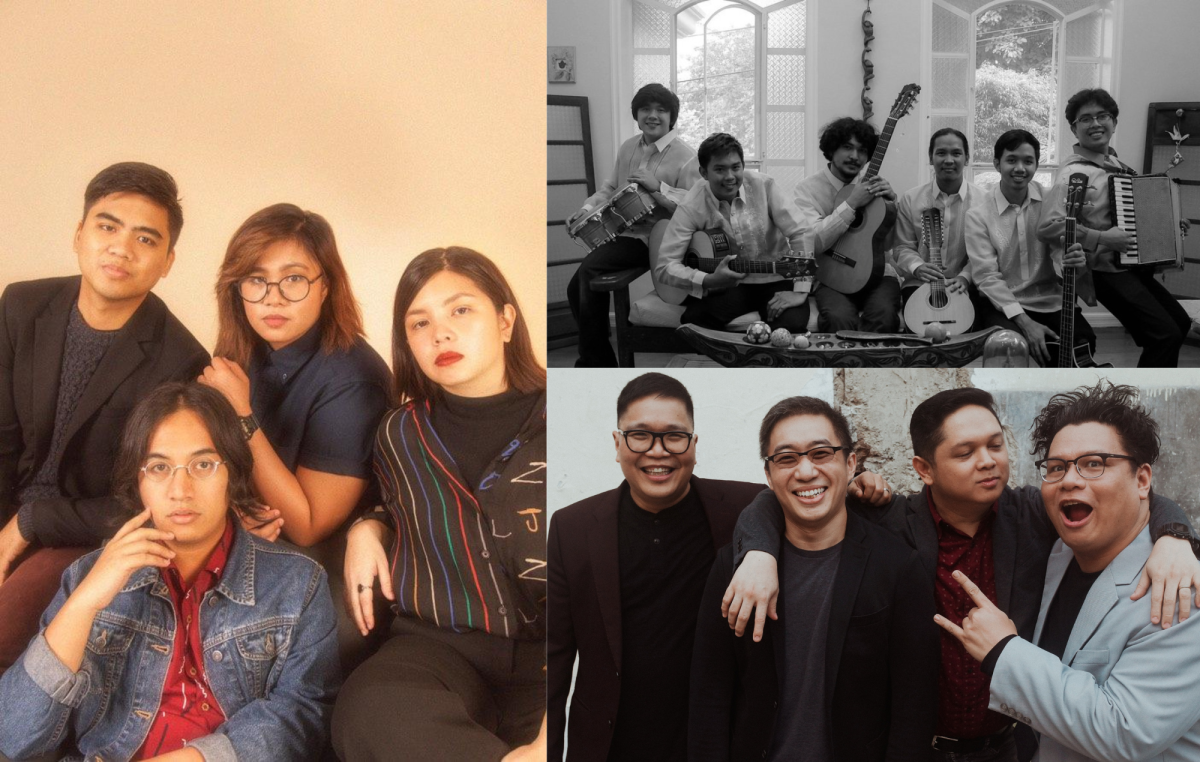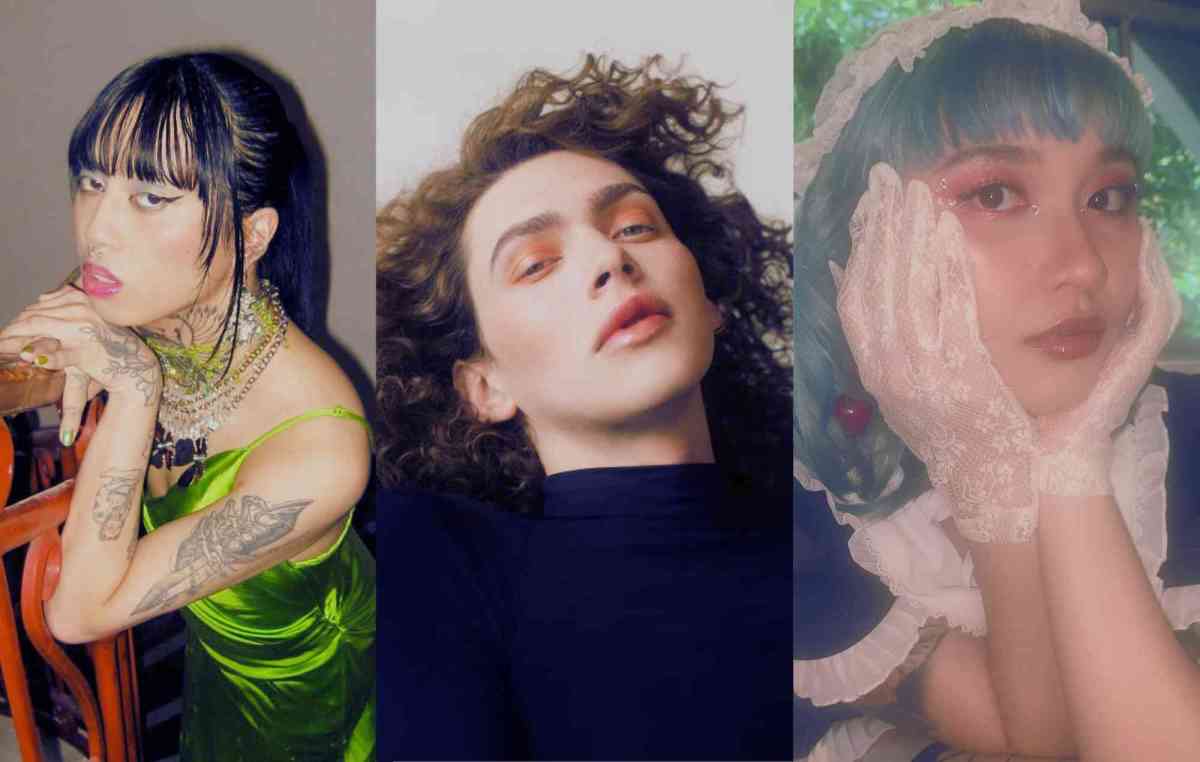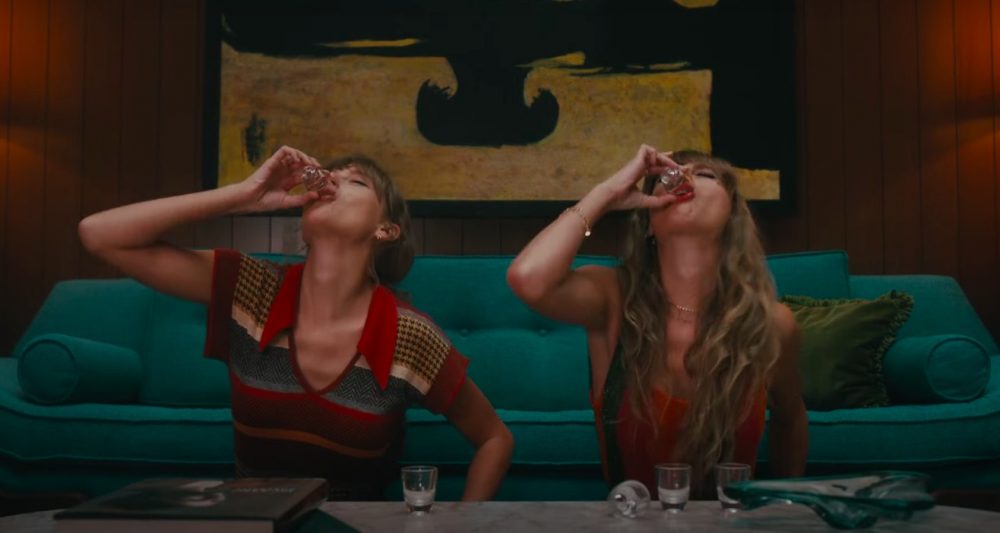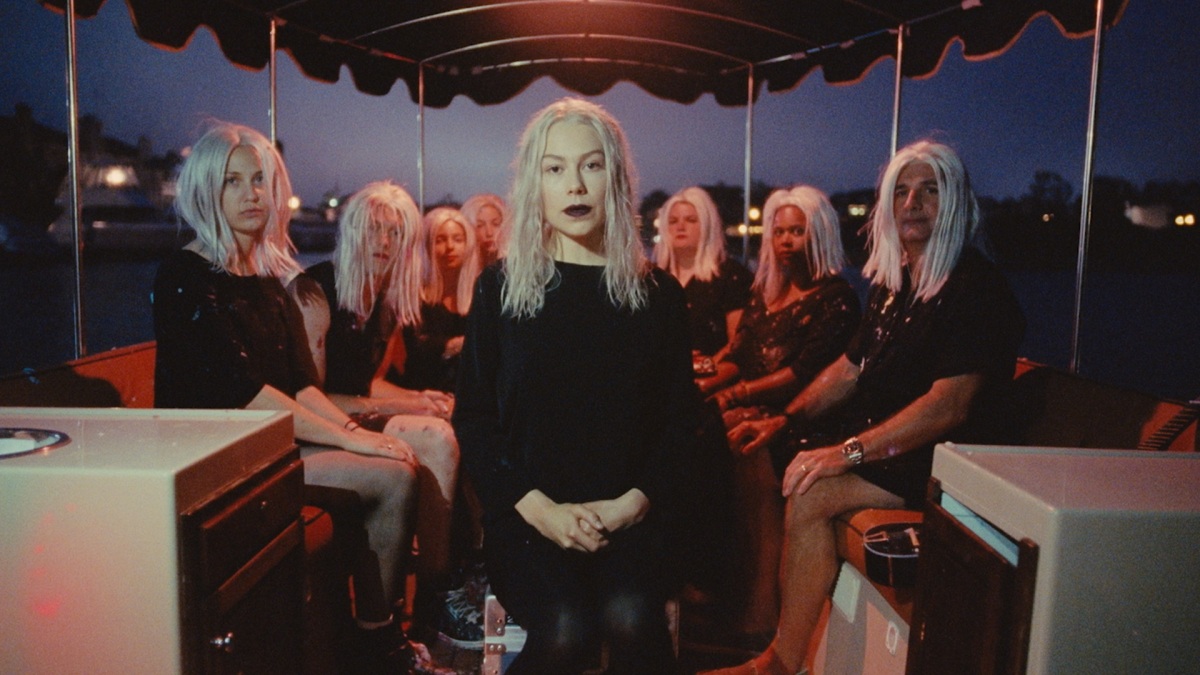With inputs from Zed Bisenio and Kai Buizon
When you take a look at some of the biggest artists of the 21st century, the 60s squeeze themselves in every nook and cranny of music. Think of Maroon 5 and Christina Aguilera’s “Moves Like Jagger.” Charlie Puth and Meghan Trainor in “Marvin Gaye.” Even boygenius’ “Leonard Cohen.” From song titles to the instrumentation of the tracks itself, six decades later, the 60s is still alive and well.
The 60s was an era of revolution. In America, the civil rights movement sent shockwaves throughout the nation as they battled for racial equality. The Cold War heightened tensions between the West and Russia. Former President John F. Kennedy was assassinated. Proxy wars were fought in countries like Vietnam, with effects of the war still being felt now. In Southeast Asia, clashes between the communists and ruling governments were felt in multiple countries such as Laos, Cambodia, and Indonesia. Needless to say, the 60s saw incredible history-changing events that were felt all over the world.
The same can be said for the music of this era. The 60s saw a revolution and rupturing of genres. The Beatles revolutionized pop. Jimi Hendrix revolutionized rock. Bob Dylan revolutionized folk. Black Sabbath revolutionized metal. The list goes on and on. In terms of music, the 60s was a total break from what was; a 20th century renaissance in the midst of global sociopolitical turmoil. It is arguably the strongest musical revolution in the 20th century.
When we take a look at how 60s music entered the Filipino mainstream, we have to look at radio host, personality, and entrepreneur Ramon Jacinto, better known as RJ. In 1962, Jacinto started what would eventually be the legendary and influential rock and roll radio station DZRJ. However, in the 1970s, DZRJ, along with the rest of the Jacinto family’s assets, was forcibly seized by the Philippine military during the Marcos dictatorship. Due to threats of being arrested, Jacinto chose to stay in exile in the United States for 14 years.
After Marcos was ousted in 1986, the radio stations as well as other Jacinto family businesses were returned to them. Jacinto reestablished DZRJ and it became a leader on the airwaves by playing music from the 1950s, 1960s, and 1970s. It was during this time that Jacinto also set up the rock and roll music lounge and restaurant Bistro RJ (now known as RJ Bistro) in Makati. It became popular among crowds as well as provided opportunities for bands to play live.
Jacinto’s relationship (and maybe, partiality) to 60s music can be gleaned from his musical influences. In an interview with The Varsitarian around 2016, Jacinto mentions that some of his influences are, “Elvis Presley, The Beach Boys, Eric Clapton, The Ventures, and The Shadows.” Elvis Presley aside, the rest of the mentioned artists more or less gained popularity in the 60s.
Filipino society’s appreciation of the 60s doesn’t start or end with Jacinto, although he had a large part in its proliferation in a post-Marcos era.
Another institution that shares the flag in pioneering 60s music in the Philippines is the now-defunct Jingle Magazine, created by Filipino music journalist Gilbert Guillermo.
Jingle was described by Guillermo as a “songbook-magazine,” which meant that it included sections of music reviews, feature articles, and the like; but most importantly, Jingle printed chords and lyrics to some of the most famous songs at the time.
Although it was established in 1970, the magazine—especially in its earlier issues—featured a lot of 60s songs in its song and chord book sections. The team from Jingle would transcribe the lyrics while professional guitarists would add the chords on top of them. In the era without Ultimate Guitar or YouTube, this made 60s music even more accessible to the Filipino public. Its influence as a rock and roll magazine as well as its anti-establishment overtones made it a target for the Marcos administration, with the dictator shutting down the publication during martial law.
However, this is only part of the story. In order to fully understand the impact of the 60s, we have to compare the importation of Western 60s music in the Philippines with the types of music being created in the Philippines during the 60s.
60s Filipino music (and by extension, the 50s) is an era that predates Manila sound (which flourished and peaked in the 1970s) as well as Original Pilipino Music (OPM) which was coined by APO Hiking Society’s Danny Javier in the post Manila sound era to refer to pop music (OPM as a concept, and whether or not it is dead, is a completely different topic). While acts like The Beatles, The Beach Boys, Jimi Hendrix, and their peers were flourishing in different genres in the West, 60s Filipino music was primarily defined by ballads and music for film scores. Think of Pilita Corrales, Vilma Santos, Victor Wood, Ric Manrique Jr, Ruben Tagalog, and the like. This genre of music dominated the Filipino mainstream at the time, and if there were attempts to diversify it, it wasn’t as prominent compared to how different genres were gaining relatively equal popularity in the West.
Fast forward to now, and it seems that there is a revival of 60s influences across indie and mainstream Filipino bands. Whether it’s just hints or a faithful recreation of the 60s, it’s clear that 60s nostalgia is here to stay. The question now is, why?
Beatles Department
To start, I have to establish that it could be as simple as musicians having artistic influences, and it so happens that a lot of them like 60s artists. However, why there are so many of them opens a deeper conversation of how nostalgia perpetuates and manifests through music.
In the 21st century, it’s easy to go all the way back to the start of the new millenium and name bands that are clearly 60s-esque. For example, Ely Buendia has admitted openly that he is very inspired by Marvin Gaye, and this inspiration is prominent in The Eraserheads’ discography. The recurring motif in “Ang Huling El Bimbo” (the La, la, la, laaaa…) is a carbon copy of the melody in Marvin Gaye’s “You’re All I Need To Get By.”
In 2005, The Itchyworms released Noon Time Show, with references to the 60s sprinkled here and there in the record. The bouncy melody in “Akin Ka Na Lang” is reminiscent of the vocal bounce in The Zombies’ “Care of Cell 44.” Other parallels can be drawn between the two songs: the bass lines are upbeat with a happy-go-lucky sounding riff, the “ooohs,” “ahhhs,” and harmonies are prominent in both songs, and the drums have the same bounce and upbeat rhythm that complements the vocals.
The Bloomfields’ 2007 self-titled album is basically a faithful love letter to the 60s. Tracks like “Alam Mo Na Yun” and “Ale” are so clearly inspired by The Beach Boys, you can almost hear the Wilson brothers being reincarnated. Their affinity for the era is basically proven through the rest of the tracklist, which includes covers of tracks that were popular during the era such as “Girl From Ipanema,” “Wouldn’t It Be Nice,” and “Surfer Girl” to name a few.
This nostalgia for the 60s remains strong even in the 2020s. The Pinkmen’s “Asked You To Dance” is very Beatle-esque; from the vocal melodies, the singing and harmonizing in unison, the chord progressions, all the way to the keyboard synths and riffs. Oh, Flamingo’s 2020 record Volumes has hints of the 60s sprinkled throughout. “Sunsets” features prominent 60s elements such as the vocal harmonies (La la la…) and the chord progression, especially the descending riff that is peppered throughout the song and its chorus.
It’s unclear if any of this was an intentional effort for The Itchyworms, The Bloomfields, Pinkmen, and Oh, Flamingo!. However, if it wasn’t, it still sheds more light on how 60s elements are so ingrained in our musical landscape that we can be unaware of how it influences our art. How 60s nostalgia continues to persist so strongly almost six decades later can be linked to different reasons and implications, but for this essay, I want to explore two: the unconscious or conscious desire to revisit a time of musical revolution and the possible causes and effects of how this 60s nostalgia affects the current musical landscape.
Burning Desire
As mentioned before, the 60s was a time for cultural revolution. It was through this rupturing of past conventions—whether sociopolitically or musically—that has catapulted the era’s top stars into god-like status. The Beatles have been touted as “the greatest band of all time” (debatable). Jimi Hendrix is hailed as “the greatest guitarist of all time” (generally accepted, but with some legroom to be debatable). These acts and their contemporaries are timeless, and until this day, very relevant in our social consciousness. There have been so many variations of Beatles documentaries, and multiple movies made about or influenced by the band, such as the terrible film Yesterday (2017).
These persevering perspectives are what contribute to the hold that the 60s has on contemporary music. A theory to consider is that this prominence of 60s nostalgia in 21st century Filipino music is that there is a conscious or unconscious desire to replicate that same revolutionary era six decades ago. It’s an attempt to relive the glamours and novelty that the 60s are defined by. Through DZRJ, plain Beatlemania, or Jingle, our grandparents and parents grew up already subscribing to the 60s, which could more or less explain how and what type of music succeeding generations were first exposed to. In the age of unfettered access to the Internet, this is only emphasized even more as both listeners and artists can easily retrieve performance videos, other artists, or songs from that era. The 60s is so pervasive that casual listeners or the untrained ear can immediately say: “Oh, this sounds like The Beatles” or “Oh, this sounds like The Beach Boys.”
It doesn’t matter whether or not you think other eras of music are superior, the fact of the matter is that the cultural significance of the 60s has generated an intergenerational passing down of its music, from the 60s itself to now. It makes sense that many artists are influenced by the era, and in one way or another, want to replicate its music.
Is this a bad thing? Definitely not. Being inspired and wanting to create music from those inspirations is part of an artist’s creative control. However, it still is an interesting phenomenon how so many acts are influenced by this particular decade, and whether or not it is conscious to replicate the novelty of the 60s, it still plays a part in why the 60s nostalgia cycle will continue to persist as newer generations arrive. More and more eras from the past will be looked at and revered in that same god-like and timeless pedestal, especially as time goes on.
Given the pervasiveness of the 60s, what does this overwhelming affection for nostalgia mean for the musical landscape of the 2020s?
Moves like Jagger
We are at a point in music where most, if not, all the lines have been drawn. Genres and their subgenres have been defined. Today, you can define or put a label on any type of music. Even the genre of “experimental” is a catch-all label that, admittedly, defeats the core of creating experimental music. In the Philippines, “new” sounds are actually reminiscent of the “old”—case in point, when IV of Spades debuted, they set themselves apart from their contemporaries at the time with their 70s-80s aesthetic and funk sound. However, the 60s still plays a key role in the band’s music. In an interview with Guitar, both Zild Benitez and Blaster Silonga cite 60s artists as their influences. For Benitez, he was heavily inspired by funk bassist Jaco Pastorius. On the other end, Silonga was first influenced by Eric Clapton.
The barriers to making music have never been lower than they are now. Whether it’s open source or free softwares; affordable instruments and gear; or the advent of YouTube, Soundcloud, TikTok, and Ultimate Guitar, it’s much easier now than ever before to make and distribute music.
On the other side of the coin, the increasing accessibility of music makes it so that artists can get influences from all over the world, and from any past era. As audiences and listeners, we have full control—and with the support of algorithms—to define, deepen, and widen their music tastes.
Given this, it seems that an attempt of creating something “new” has probably been thought of, or unknowingly shared, by artists around the world. Attempts to revolutionize the elements of existing genres have been siloed into the numerous subgenres we have today—anti-folk, alternative hip hop, experimental (insert any genre), and the like.
Today, there’s an abundance of labels that we use to describe the sounds that we hear. It’s part and parcel of human nature; humans create labels to create a point of reference. When we try to describe music (translating sounds into words) having labels makes it easier to communicate and share that musical experience without having the other person listen to the song. Labels create that sense of familiarity. That familiarity is why audiences listen to these songs, or seek out artists that create the sound that they like. In the same vein, familiarity allows for artists to “define their sound,” creating points of references for band members or collaborators to share the same understanding of music.
In the context of 60s nostalgia, these labels are where the past and present diverge. Today, many of the 60s nostalgia bands are defined (if not by the era itself,) by their 60s counterparts. Examples of this include, “This sounds like The Beatles or this sounds like The Beach Boys.” These 60s bands become part and parcel of the band’s identity. Some have hints of 60s influences in their music, while others are more faithful to the 60s formula. Compare this to bands during the 60s, where The Beatles et al were defined by themselves. Rather than being defined by their “own sound,” 60s nostalgia bands are reminiscent of an era gone by.
The more far removed a generation is from an era of music, the more novel and mythic that era becomes. There is a novel and mythical aspect of not being able to see this artist live ever again or not hearing that band play or create new music that this new generation of listeners prefer. For many audiences, these 60s or any era’s nostalgia acts are the closest approximation to being in that era itself. For example, Zild’s music and aesthetic evokes the nostalgia of 80s-90s emo/new wave/post-punk bands. How he presents himself—very ala The Cure—is very popular among younger Gen Z audiences. The same goes for artists, where there is an intentional or unintentional desire to create music that sounds like or is heavily influenced by these eras.
Revolution 1
Why are so many bands revisiting the 60s in particular? As mentioned before, the 60s were the first complete overhaul of what music could sound like in the 20th century. The music from the 60s is one of the most timeless sounds in music in general, and is still relevant to artists and their influences today. With 60s nostalgia bands, there is a conscious or unconscious desire to replicate the revolution or glamour of the 60s.
However, this also asks the question: can we still create music that sounds “new” or novel in the 21st century if it seems that “every” type of music has already been created or defined? Like so many questions that grapple with current evolving phenomena, it’s difficult to say so right now.
Is the ultimate goal of musicianship to create something new versus self-expression, a reaction to society, or to generate a reaction from society? As much as with art, this varies. Much of the music prior to the 21st century has pushed the limits of what music could sound like—think Frank Zappa, Captain Beefheart, Sun Ra, and their contemporaries. They showed that the lines of what is considered music could be crossed. Even genres that are associated with the 2020s (such as hyperpop) can be traced to the 80s.
In the 21st century, social media has given us full access to the past. These drawn lines are more emphasized than they were before. Whether or not we can cross them yet again has yet to be determined.







